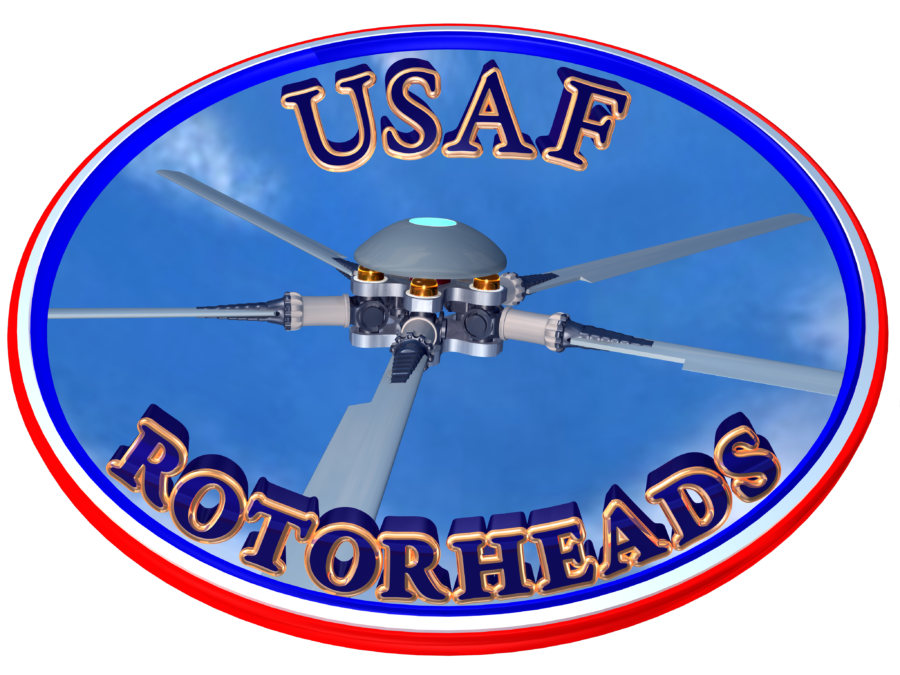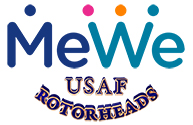Facts, Firsts, and Records
Historical Air Force Helicopter Firsts and Helicopter Records

FIRST USAF ALL-FEMALE HELICOPTER CREW
The first USAF all-female helicopter crew took to the air September 17, 1985 at Ellsworth AFB, SD. The first all-female helicopter crew in the Air Force flew together for the first time on September 17, 1985 at Ellsworth AFB, SD. The crew, consisting of 1st Lt. Dawn L. Eiland (AC), 1st Lt. Carol F. Kilbride (P), Sr. Amn. Michele L. Lange (MT), A1C Melissa A. Gundrum (MT) and A1C Patricia A. Jones (MT), have the primary mission of supporting the 44th Strategic Missile Wing. (Courtesy of USAF RotorHead PAUL NOTTINGHAM)
40th HS fields first all-female crew in a decade (AF News)
FIRST COMBAT SAR HELICOPTERS TO SEA
On 17 June 1964, 2 HH-43Bs (62-4565 & 62-5978) from the 33rd ARS at Naha AB Okinawa arrived at Udorn RTAFB by airlift. The aircraft were assembled and ready on 19 June. They were flown to NKP on 20 June. They were TDY from the 33rd ARS and consisted of people from Okinawa, Korea and the Philippines. In August 1964 a third aircraft (62-4564) arrived. On 1 September 1964 the unit formed PARC, Det. Provisional 3. The aircraft stood alert during the day.
The first USAF SAR took place on 18 November 1964 with two HH-43Bs (Pansy 88 and 89) into Laos. Reference the mission on Johan Ragay's website (Chpt 5.02)
FIRST HELICOPTER AIRLIFT IN A C-54
On January 17, 1945, a priority radio was received stating that a helicopter was urgently needed to rescue a group of American fliers who had been forced down in Burma. The problem was the helicopter was located at Wright Field in Dayton OH. This is an interesting story of airlifting the YR-4 in a C-54 and of a rescue mission that took place after arrival.
(Thanks to Tom Garcia it is important to note that the first helicopter air lift took place early in 1944. Sikorsky YR-4Bs were airlifted to India aboard Curtiss C-46 Commandos for combat evaluation. Lt. Carter Harmon made the first AAF helicopter rescue in one of these aircraft).
FIRST SUCCESSFUL RESCUE OF A HUN PILOT IN SOUTHEAST ASIA
From “The Intake”, Journal of the Super Sabre Society, December 2006, Issue Number Two (Story Snippet)
Also reference the mission on Johan Ragay's website (Chpt 6.06)
SUPER SABER SOCIETY HAS GRANTED PERMISSION TO POST THIS DOCUMENT. SPECIAL THANKS FROM USAF ROTORHEADS TO:
R. Medley Gatewood, Editor, The Intake
| HH-43B/Alban 21(Low Bird) Det Prov 2 PARC/NKP |
F-100D/ PANTHER 02 615 TFS/401 TFW |
HH-43B Alban 41(High Bird) Det Prov 2 PARC/NKP |
|---|---|---|
| (RCP) Capt Jay Strayer (RCCP) Capt James Rodenberg (CC/HM) A1C Cecil Boothby (PJ) SSGt Ensom “EJ” Farmer (PJ) SSGT Herbert Romish |
DaNang AB, RVN Capt Ronald A Bigoness (Rescued 31 March 1965) |
(RCP) Capt Israel Freedman (RCCP) Capt Warren Davis (CC/HM) A3C Frank Hanutke (PJ) SSGT Harold Stroud (PJ) A2C Eric Anderson |

This picture is believed to be the first picture of a Jolly Green rescue crew and the downed pilot. It was made on 24 August 1965 by a CH-3C, #63-9676, assigned to NKP and the pickup was made in NVN. More can be read on the "1st CH-3 to SEA" page in this section. This particular "save" was the second combat save by the Jolly Greens in SEA.
The CH-3C flight crew was Phil Stambaugh (P) in the door, Left to Right George Martin (CP), George Thayer (PJ), James Armenia (HM), Dean Pogreba (F-105 Pilot), and Francis Hill (HM)
CH-3C 63-9676 (later became the infamous "Black Maria")
The picture is courtesy of Jim Howerton. Dean Pogreba presented this picture to Jim’s father. Jim’s father served with Dean on several assignments and considered Dean as one of his closest friends. This picture was given to Jim's Dad by Dean Pogreba
NOTE: The shoot down happened on the 22nd of August 1965, with Maj Dean Andrew Pogreba of the 36TFS, 6441 TFW flying F-105D serial 62-4235 from USAF Takhli. During an armed reconnaissance mission the F-105 was shot down while attacking a target about 25 miles west of Thanh Hoa. Sadly, Maj. Dean Andrew Pogreba was shot down an killed during a raid northeast of Hanoi on 5 October 1965. This information is from a book called "Vietnam Air Losses" and was provided by Sid Nanson.
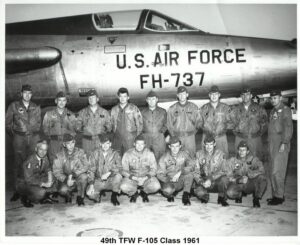
This picture is courtesy of Jim Howerton. Dean Pogreba is kneeling on the left and Jim's Father is standing third from the left.
On 5 Oct 65, Dean Pogreba was lost and was later declared KIA/Body not recovered.
CH-3C 63-09685 was shot down on 6 November 1965. This was the first Jolly Green lost in SEA.
CH-3C 63-09685 made the first combat rescue pickup with the CH-3's. Using the call sign of "Jolly Green 1", F-105 pilot Capt. Frank Tullo was picked up by the crew (George Martin-pilot, Orville Keese-co-pilot, Curtis Pert-FE, and George Thayer, P.J.) on 27 Jul 65. This is the first time the call sign of "Jolly Green" was used in a combat rescue.
"Flight Test and Maintenance School"
From Kaman RotorTips June 1962-page 5
(COURTESY OF JOHAN RAGAY)
The first of six H-43B Test Pilot's and Maintenance Flight Technique Schools for selected ARS personnel was held recently at Dow Air Force Base, Maine. Hosts for the event, which was sponsored by the Kaman Aircraft Corp., were members of Det. 42, EARC, at the base. Mr. Ralph R. Lee, Kaman test pilot; and Mr Raymond A. Vokes, a company instructor; conducted the five-day course.
Purpose of the school was to give ARS test pilots and mechanics the latest information on performing functional test flights, what to look for on such a flight in the way of discrepancies; the type information the pilot should pass on to the mechanic to aid in correcting any discrepancies, and similar information which would aid in maintaining the aircraft through a closer relationship between pilot and mechanic.
Among those attending the school were Capt. J. A. Crupper, Loring AFB, Me.; lst Lt. D. E. Stranahan, Dow AFB, Me.; 1st Lt. W. J. Deming, Westover AFB, Mass. ; 2nd Lt. J. T. Connell, Pease AFB, N. H.; 1st Lt. R. L. Merna, Griffiss AFB, N.Y.; Ist Lt. H. G. Caldwell, Dover AFB, Del. ; 1st Lt. N. R. Albee, Seymour Johnson AFB, N.C.; Capt. J. M. Slattery, Robins AFB, Ga.; CMSgt. R. T. Hamilton, Loring AFB, Me.; SSgt. W. E. Cobb, Dow AFB, Me.; A2c J. E. Laurenson, Pease AFB, N. H.; TSgt. C. L. Eby, Westover AFB, Mass. ; SSgt. J. C. Ross, Griffiss AFB, N. Y. ; SSgt. W. Bostic, Dover AFB, Del. ; SSgt. J. Barnes, Seymour Johnson AFB, N. C.
First USAF H-43/CH-3C Combat Rescue Unit in SEA
When the two CH-3Cs, that were transferred from TAC, arrived at NKP in July 1965, Det 1 38th ARRS became what was probably a first. It was the only Combat Rescue Unit with both the H-43 and the CH-3.
With the original -1 engines, the CH-3C wasn’t able to pick up much and the H-43 could outrun it at 10,000 feet, as the H-3 would encounter blade stall at about 65kts.
George Martin, Phil Stambaough and Fred Liebert (now deceased) were the original "Jolly Greens" who flew missions along with the H-43s. During the period of May through October 65, 8 pilots were picked up out of NVN. The H-43s recovered five and the H-3s recovered three.
Most of the time the CH-3Cs worked alone (one bird) out of Lima Site 36 for the deep north missions. The CH-3s made their first pickup of Frank Tullo on the 27th of July.
When George made their first pickup, the hoist went down and only came part way back up. They had to carry Tullo on the end to a rice paddy and have Curtis Pert, HM, and George Thayer, PJ pull him in.
The engines were not only small, they power deteriorated badly, and George had to over boost and over temp getting out of there. They had to change one engine when they got back to Site 36. They didn’t have any remote area stands to change it, so the guys threw a rope over the rotor blades, dropped out the bad one, and put on a good one that Air America flew in.
George, Orvil Keese, Pert and Thayer made the pickup of Tullo, 27 Jul 65 with 685. Phil Stambaugh, George M, Francis Hill, James Armenia and George Thayer picked up Dean Pogreba, 24 Aug 65 in 676, (I believe that one of our 43s flew as high bird on that one). The last pickup was made on 21 Sep 65 in 685 when George M, George Warren, Diggs, Tart and Scherzer picked up Greenwood. (The day after Tom (Curtis) & crew was shot down on HH-43B/62-4510.). The one in the AF Museum at Wright Pat, 776, is the one that George had. You can still find the bullet holes in it. (As I remember, Joe Ballinger)
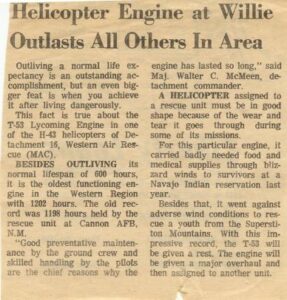
We did this in 1968 at Williams AFB. Wish I could remember all the names of everyone involved. I rode in the left seat during this flight. We took off and flew a 2.5 training flight around the flag pole at Williams AFB. Maj Walt McMeen was the pilot. He also set one of the altitude records for HH-43s in the early 60s. -- COURTESY OF GARY PRUITT
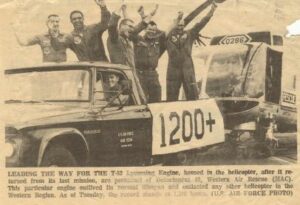
OSBY HUNTER 2nd FROM LEFT AND GARY PRUITT ON THE RIGHT IN THE BACK OF THE PICKUP
UNITED STATES ARMY AIR FORCE
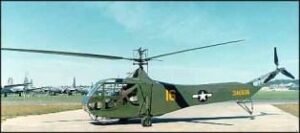
R-4
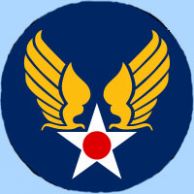
U.S. Army Air Corps
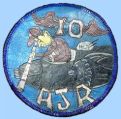
10th Air Jungle Rescue Det
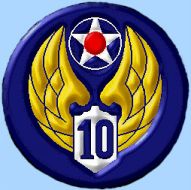
10th Air Force

FIRST AAF HELICOPTER RESCUE
The first recorded use of a helicopter as rescue aircraft by the U.S. Military took place in the China-Burma-India Theater of World War II. A Sikorsky-built R-4 helicopter was used in April 1944 in a dramatic rescue of a downed pilot and three wounded soldiers in the jungles of Burma. The fledgling aircraft was underpowered, which was only made worse by the heat and humidity of the jungle.
Lt. Carter Harmon made the first AAF helicopter rescue, in Burma behind Japanese lines on April 25-26, 1944. First Air Commando sergeant pilot Ed “Murphy” Hladovcak had crash landed his L-1 light plane with three wounded British solders on board. Taxing his YR-4 43-28223 helicopter to its performance limits, Harmon made four flights to the site, making the final hasty liftoff just as shouting soldiers burst from the jungle. He learned later the soldiers were not Japanese, but an Allied land rescue party.
The R-4 was first used in combat in May 1944, after which, Col. Philip G. Cochran, Commanding Officer of the 1st Air Commando Group wrote to a friend, "Today the 'egg-beater' went into action and the damn thing acted like it had good sense."
FIRST OFFICIAL AAF RESCUE UNIT

YR-6As of the 8th ERS. (U.S. Air Force photo)
YR-6As of the 8th ERS, formed in China in May 1945, as the first official USAAF helicopter rescue unit.
Sikorsky R-6A's attached to the 14th Air Force provided essential search and rescue services for aircraft crossing "The Hump" into China during the final months of World War II.
 Maintenance personnel with an H-5A on Cho-Do Island, located just off the North Korean coast, 50 miles north of the 38th Parallel, in 1952. Rescue aircraft and a ground control intercept radar facility occupied the island despite the nearness to the enemy mainland. (U.S. Air Force photo)
Maintenance personnel with an H-5A on Cho-Do Island, located just off the North Korean coast, 50 miles north of the 38th Parallel, in 1952. Rescue aircraft and a ground control intercept radar facility occupied the island despite the nearness to the enemy mainland. (U.S. Air Force photo)
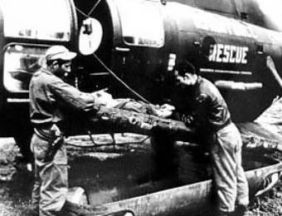 Preparing a casualty for evacuation to a hospital in a 3rd ARS H-5. During the Korean War, men of this unit (later designated a group) earned more than 1,000 personal citations and commendations. (U.S. Air Force photo)
Preparing a casualty for evacuation to a hospital in a 3rd ARS H-5. During the Korean War, men of this unit (later designated a group) earned more than 1,000 personal citations and commendations. (U.S. Air Force photo)
During the Korean War, the increased use of helicopters on rescue missions became a dominant factor in saving lives. By the war’s end, ARS crews were credited with the rescue of 9,898 United Nation’s personnel; 996 were combat saves.
July 15, 1952 - First transatlantic helicopter flight
Two U.S.A.F. Sikorsky H-19s (S-55) “Hop-A-Long” and “Whirl-O-Way” flew from
Westover AFB, Chicopee, MA to Wiesbaden, Germany) and arrived on Aug. 4, 1952.
(51 hours 55 minutes flight time, with 6 stops in 21 days)
From
Timelines
Chronology of Massachusetts Aviation
First Trans-Atlantic Crossing by Helicopter

Hop-a-long and Whirl-o-way arriving Prestwick, Scotland
The U.S. Air Force Air Rescue Service ferried two H-19s across the Atlantic Ocean by way of Labrador, Greenland, Iceland and Scotland to Wiesbaden, Germany. The two H-19s flew from Sikorsky to Westover Air Force Base in Massachusetts.
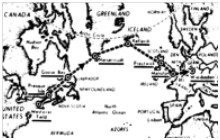
On July 15, 1952 the two aircraft, christened Hop-a-long and Whirl-O-Way, started their long cross Atlantic journey to Germany. Harry Hleva and Edward Benham were the two Sikorsky representatives on the long adventurous trip. On July 31, Hop-a-long and Whirl-O-Way arrived to a festive reception in Scotland. They were rushed to an air show in The Hague, Netherlands, and then to their final destination, Wiesbaden, Germany.
From Sikorsky Archives News, July 2006
H-19A TRANS-ATLANTIC FLIGHT
The account which follows is by a member of the party which welcomed the crews at Prestwick, and it begins with an air-to-air impression of the arrival, for the writer, Colin Cooper, was on board a B.E.A. Viking (chartered by United Aircraft Corporation and by Westland Aircraft, the Sikorsky licensees in this country) which flew out to sea to meet the helicopters.

H-19A's approaching the Ayrshire coast, near Prestwick.
LAST week we briefly recorded the arrival in this country of the two U.S.A.F. H-19 helicopters (Sikorsky S.55, 600 h.p. Pratt and Whitney R-1340), the first rotor-planes to cross the Atlantic. It is now possible to tell the story of this historic flight in greater detail. The account which follows is by a member of the party which welcomed the crews at Prestwick, and it begins with an air-to-air impression of the arrival, for the writer, Colin Cooper, was on board a B.E.A. Viking (chartered by United Aircraft Corporation and by Westland Aircraft, the Sikorsky licensees in this country) which flew out to sea to meet the helicopters.
ROTORS OVER THE ATLANTIC . . .
WHEN we arrived at Prestwick on Thursday, July 31st, the Viking's pilot, Capt. McKeown, learned that the two helicopters were within 200 miles of the coast, and it was decided that we should go out to welcome them. By the time preparations were made, it was necessary to fly only approximately 50 miles to their estimated location; on arrival, however, there was no sign of them and it was only on turning back that we spotted the escorting aircraft, and then the H-19s themselves.
Capt. McKeown closed right in on the helicopters, which were flying at approximately 500ft in close formation, and it was then that I had the satisfaction of doing one of those small things that many an airline passenger must have wished to try. We had permission to pull out the sortie de secour window-panels of the Viking for photographic purposes: it was surprising how little effort was required—I was most encouraged.
As the Viking circled the two helicopters, one could see that their crews were delighted at the friendly welcome. After formatting two or three times with flaps down at about 100 m.p.h. our Viking gave a traditional aircraft salute; then we sped back to Prestwick to join the reception committee.
Shortly after 4 p.m., the helicopters came sweeping into the airport low over the hangars, their fuselages glistening in the evening sun. They flew past the waiting crowds in a splendid beat-up and then stall-turned into their landing approach. First down was Hop-A-Long, flown by Capt. Vincent H. McGovern, the 29-year-old expedition commander, bomber pilot of War II and Korea veteran of 96 helicopter rescue missions. His co-pilot was Capt. Harry C. Jeffers, also a Korea veteran. The second machine, Whirl-O-Way, was captained by 1st Lt. Harold W. Moore, who has 112 Korean missions to his credit; its co-pilot was Capt. George O. Hambrick, who had been so keen to be included in the expedition that he offered to take orders from his junior officer.
After the crews had been subjected to the usual broadside of press and newsreel cameras, General Griswold, Commanding General of the 3rd Air Force in Great Britain, welcomed the crews on behalf of the U.S.A.F. Also there to greet them were Mr. L. D. Lyman, vice-president of United Aircraft, Mr. Muir of the same organization, and Mr. Martin Graham of their Pratt and Whitney division.
The British welcome was extended by Mr. J. Fearn, director of Westland Aircraft, Ltd.—who are building these Sikorsky S-55s as well as the smaller S-51s in this country—and Mr. A. H. Williams, the company's commercial manager. The writer was privileged to welcome the four pilots on behalf of the Helicopter Association of Great Britain, and they received a letter and telegram of congratulations from the Association's president, Mr. Eric Mensforth.
Although they had been flying for over ten hours, the four crew-members did not appear unduly tired, as, with Maj. Richard B. McVay, they told the story of their trip. As project officer, Maj. McVay had accompanied the helicopters in the C-47, one of the two aircraft that escorted the expedition across. The other was a Grumman Albatross amphibian.
The day-by-day story of the flight was as follows:
July 14th — A farewell party was given in the officers' mess at Westover Air Force Base, near Springfield, Mass. Mr. Igor Sikorsky, pioneer designer of the Sikorsky range of helicopters, and Mr. Ben Whelan, general manager of Sikorsky aircraft, were amongst the well-wishers who gathered at Westover A.F.B.
July 15th — The two helicopters took off from Westover on the first 380-mile leg, to Presque Isle, Maine. Each had three extra 100 U.S. gallon fuel tanks in the cargo hold, giving a total capacity of 480 gal. The machines took off at a gross weight of 8,125 lb, an authorized overload of 625 lb. A short running take-off was made to avoid any risk of sink between a hovering take-off and transition to forward flight. The trip to Presque Isle was uneventful.
July 16th — Delay due to bad weather.
July 17th — The 570-mile flight to Goose Bay, Labrador, was completed uneventfully.
July 18th-19th — Bad weather over Greenland precluded the escort aircraft from attempting the 770-mile crossing.
July 20th — A first and unsuccessful attempt was made at the long crossing, but the helicopters met headwinds when half way and were forced to return to Goose Bay. On the second attempt they were called back after 1 1/2 hours' flying, because the weather had again closed down over Greenland and would have prevented the escort aircraft from landing there. On the third try the helicopters struck extremely bad weather, with poor visibility and rain-storms, when only 1 hr 20 min out from the Labrador coast. They were therefore ordered to return. On the way back, headwinds of up to 50 kt were encountered and at times the H-19’s had a "sea speed" of only 25 kt. After 4 hr 40 min flying it was deemed impracticable to complete the return journey to Goose Bay against such head-winds and the helicopters therefore landed at an Army Camp at Cape Harrison (on the Labrador coast) for the night, returning to Goose Bay next day for refueling. There was now a weather hold-up of nearly a week.
July 27th — On the fifth attempt, which was to prove successful, the helicopters and their two escorting aircraft had passed the point of no return when the American weather bases at Bluie West One and Bluie West Two in Greenland announced a complete close-down: the ceiling at B.W.1, the destination, was 50ft, with visibility of a little over 100 yards. The expedition was obliged to continue, however, and on arrival near Greenland the helicopters were forced down to 30ft, and a careful lookout had to be kept for icebergs and small islands. Eventually the helicopters were forced to land on a tiny island 42 miles short of their destination, where they stayed the night of Sunday, July 27th.
July 28th — The aircraft flew on to Bluie West One.
July 29th — The helicopters were rejoined by their escort aircraft, which had been forced to land elsewhere, and after take-off they all flew south around Cape Farewell, the southernmost point of Greenland. With a 35 kt tail-wind they arrived at Keflavik, Iceland (850 miles), after 9 hr 50 min, two hours ahead of their E.T.A. In Iceland the expedition was welcomed and entertained by Westland Aircraft agents Mr. Gisli Johnson and Mr. Paulsen.
July 30th — Again the likelihood of head-winds precluded a start on the last 920-mile hop to Prestwick via the Hebrides.
Thursday, July 31st.— The weather report being favorable, the helicopters made a 6 a.m. B.S.T. take-off. All went well, and after their longest flight (947 miles)* of 10hrs 10min the two aircraft completed the first helicopter crossing of the Atlantic when they landed at Prestwick at 4.10 p.m. B.S.T. The total flying time was 42hr 25min for the complete trip of some 4,000 miles from their base in Massachusetts. On arrival the pilots stated that they still had three hours' fuel remaining. Cruising speeds of 80 to 85m.p.h. had been maintained, at altitudes varying between 50ft and 3,500ft, as dictated by weather; usually the height was around 500ft.

The two H-19s touch down at Prestwick, under fire from an assorted battery of cameras. 
Not all the route-maps were carried in the cockpits. It was just as well that landfall was not to be made a\t the U.S.A.F. base at Manston, Kent....
It is interesting to note that jet fighters waiting at Goose Bay to be ferried across the Atlantic at the time of the departure of the helicopters were still waiting for suitable weather when the latter had completed their crossing.
The flight was a most ambitious and courageous undertaking, and its success reflects credit on the Bridgeport team of designers and engineers responsible for Sikorsky helicopters. It is an appropriate addition to the long list of "firsts" that Igor Sikorsky's many helicopters have counted to their credit. It will be remembered that Igor Sikorsky was responsible for the design of the V.S.300, the world's first practical helicopter.
The first commercial license for a helicopter was for a Sikorsky machine and many of these machines have since set up world records for speed, distance and altitude. It is fitting that it was two of Sikorsky's latest production machines that brought home the helicopter Blue Riband of the Atlantic to their pioneer designer.
The two S-55s, or H-19s, which made the Atlantic crossing continued next day (Friday) to the Continent, on their way to join the 9th Air Rescue Squadron at Wiesbaden, Germany; on the Saturday (August 2nd) they appeared at the Ypenburg Display in Holland, an account of which appears on pages 181-183. For operational duty the extra fuel tanks will, of course, be taken out and rescue winches re-installed. It is understood that the crews will shortly return to the United States.
Apart from its historical significance, the Atlantic flight has proved that it is possible to deliver rotor-planes from America to Europe by this method. Whether in peace-time it would be economically practicable has yet to be evaluated, for it is obvious that the elaborate escort arrangements used on this occasion could not be repeated for every delivery. Apart from their search and rescue responsibilities, the escorts acted as navigators: they gave the helicopter pilots their position every 15 minutes, and one, flying ahead, sent out a continuous signal. C.C.C.
*Subject to official confirmation, this will break the long-standing helicopter straight-line distance record of 1,132.337 kfn (704.5 miles), established in May, 1946, by Maj. F. T. Cashman, who flew a Sikorsky R.5A from Wright Field, Dayton, Ohio, to Logan Field, Boston, Mass.

One of the H-19 crews, Capt. McGovern (right) and Capt. Jeffers, meet Gen. Norstad, Commanding General, U.S. Air Forces in Europe, at the Ypenburg display. Portraits of the other crew-members appeared last week. "Flight" photograph

Extra tankage in the holds of the helicopters brought the fuel capacity up from 180 U.S. gallons to 480. An overload take-off weight of 8,125lbs. was permitted for the purposes of this particular flight.
From Flight 15 August 1962 edition -- COURTESY OF SID NANSON

The other half of the transatlantic team, Whirl-O-Way, at Goose Bay Labrador just before takeoff on the next leg of the 3,984 mile trip. H-19A was flown by 1st Lt. Harold Moore and Capt. George Hambrick. Map on side of nose shows route and bears legend "Wiesbaden Or Bust". ARS SA-16 and SB-17 Flying Fortress in background. Wiesbaden was headquarters for USAF in Europe

Lead aircraft of the pioneering 1952 transatlantic flight. Hop-A-Long was flown by mission commander Capt. Vincent McGovern and Capt. Harry Jeffers. Note extra fuel tanks in the cabin and mechanic on work stand above cabin door. Aircraft name and map (barely visible) were painted in red on nose. (Smithsonian NASM)

Hop-A-Long
H-19A 51-3893
Reese AFB TX 1957
Photo Courtesy of Bill Lyster

Whirl-O-Way
H-19A 51-3890
Landing in Germany 4 August 1952
USAF Photo
H-19A TRANS ATLANTIC FLIGHT
The below information was extracted from an article by Robert F. Dorr and was titled "Manifestly Multirole" Sikorsky's H-19 series detailed and was published in Air International April 1992. Sid Nanson provided the article for our use.
More than a mere stunt or attempt to get into the record books, the first transatlantic helicopter crossing was an important test of the capabilities of rotorcraft to deploy rapidly over long distances. The man who would eventually lead the mission, Air Force Captain Vincent McGovern, proposed the idea.
McGovern had flown the lightweight Sikorsky H-5 (S-51) on 96 missions in Korea and had been impressed by the specifications of the big new H-19. He first had the opportunity to fly the new helicopter in January 1951, and a year later, while serving in the headquarters of the Air Rescue Service, he formulated a plan to ferry two H-19s across the Atlantic. He reasoned that if the Cold War was to turn hot in Europe, American forces would need hundreds of helicopters, and the cheapest, fastest way to got them there would be to fly them. The long flight would create the opportunity to both experiment with helicopter range extension techniques and explore problems of helicopter pilot fatigue.
McGovern submitted his plan on June 5, and received approval from the commander of MATS two weeks later. Hurrying to take advantage of mild summer weather, he assembled an experienced team of helicopter pilots and seized the opportunity to save the government the $5,000 it cost just to pack two H-19s for overseas shipment. The team rushed off to the Sikorsky plant to collect two new H-19As scheduled for delivery to the 9th Air Rescue Squadron at Wiesbaden Air Force Base in West Germany.
The helicopters were stripped of their pontoons, rescue hoists, sound proofing, cabin heaters (the crew would wear rubber exposure suits on the long haul), and other non-essentials, then loaded with three 100-gallon fuel tanks to boost total fuel capacity to 480 gallons. Christened Hop-A-Long (51-3893) and Whirl-O-way (51-3890), the two H-19s flew from the factory to Westover Air Force Base in Massachusetts, and then, on July 15 1952 from Westover to Presque Isle Maine on the first leg of their long hop.
At Presque Isle, the mission was grounded for two days by bad weather. On July 17, the two helicopters went on to Goose Bay Labrador, under the comforting watch of Duckbutt Alla, a converted B-17 Flying Fortress (SB-17) loaded with rescue gear. The four-engine bomber provided advance weather information and navigational guidance for the helicopters over water.
Hop-A-Long and Whirl-O-Way were also shadowed by Playmate, a SC-54 transport carrying spare parts, mechanics, and observers.
Turned back to Goose Bay three times by bad weather, and forced to spend the night at an isolated Eskimo village near Cape Harrison, Labrador, McGovern and company set out on July 27 for Greenland. Enroute, Whirl-O-Way's gyroscope failed, and the two helicopters were forced to fly low to maintain visual formation, dodging around icebergs as they skimmed the sea below thick fog.
Narrowly missing the upturned end of an iceberg, the choppers landed on rocky icy Simiutak Island where their crews shared the hospitality of a remote Canadian radio outpost. The next day, the pair pressed on to Narsarssuak, Greenland and from there to Keflavik, Iceland, setting a nonstop helicopter distance record of 703.6 miles.
On the next day, July 31 the helicopters broke their own record, flying more than 800 miles nonstop from Keflavik to Prestwick Scotland.
From a festive reception in Scotland they were rushed to an air show at The Hague, Netherlands, and from there they flew on to their final destination, Wiesbaden Germany, arriving on August 4. The two H-19s were on hand with the 9th ARS two days later to save the crew of an American bomber that crashed in a river.
The 3,984 statute mile trip took 20 days and accounted for 51 hours, 55 minutes of flying lime, hardly the speedy deployment McGovern had hoped to demonstrate. But the effort stands as a testimonial to four determined men and the helicopters they flew.
The Pilots were Captains Vincent McGovern, Harry Jeffers, George Hambrick, and Lt. Harold Moore.
Sid Nanson provided the following:
51-3890 was donated to the State of Nebraska on the 4th of February 1960. It was given a civilian registration, N109DA, although I do not know if it flew at all when it was with the Nebraska Adjutant General's office. It is possible that this historic helicopter ended up with the West Nebraska Technical College.
51-3893 went into DM on the 25th of October 1960 and departed there on the 15th of September 1961. It was Stuck off Charge from the USAF on the 24th of August 1962 as a "MAP" aircraft, recipient country unknown to me.
The following provided by Bob Brubaker, Bill Crawford and Bill Lyster:
Portions of this text and pictures have been published in the Air Rescue Association Newsletter (ARA), with more to be published in the future. (Air Rescue Association Website)
The link below will take you to the text and pictures referenced. Pages 1-27 tell about two of our members’ early days (Bill Crawford and Bill Lyster) as well as two friends of theirs. This portion has been previously published in an earlier ARS newsletter.
Pages 27-31 describe the trials and tribulations that Bill Crawford and Bill Lyster encountered when taking on the task of reassembling Hop-A-Long and Whirl-O-Way when they were returned to the States. This portion will be published in the ARA newsletter at a later date. Local Base Rescue (18 Jul 06)

The "Otis Falcon" most likely in France
Courtesy of Sid Nanson



The "Otis Falcon" at Suffolk County AFB in 1963 -- Courtesy of Jim Burns
CH-3B Trans Atlantic Flight
The US Air Force found it needed a helicopter with enough range and payload capacity to be able to fly out and resupply the Texas Tower radar sites located out in the Atlantic Ocean off of the New England Coast, as well as be able to recover drones.
Three CH-3Bs were purchased by the Air Force specifically designed for the Air Force mission at Otis AFB. Serial numbers 62-12574, 62-12576, and 62-12576 were flown directly from the factory to Otis AFB MA.
Not long after acceptance by the Air Force CH-3B (62-12574) dubbed the “Otis Falcon“ flew from Otis AFB Massachusetts to Paris France. Total flight time was 35.5 hours and included stops in Labrador, Canada, Greenland, Iceland and Scotland before landing in Paris.
Due to weight limitations the crew consisted of three pilots. The three could rotate and relieve one of the pilots. An additional internal fuel tanks was installed for the flight.
Fellow "Rotorhead" Ernie Cyrus was the FE that accompanied the Atlantic crossing. He flew aboard the chase aircraft for the over water portion of the trip. While in Europe Ernie flew with the aircraft to the different places that was visited.
The “Otis Falcon” upon completing its European visit was returned to the US via ship.
Read more about CH-3B's at this cut and paste link; http://www.helis.com/database/model/802/
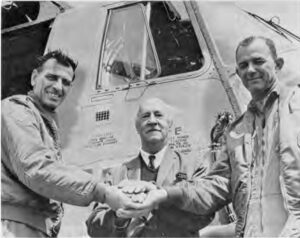
Standing in front of one of the two HH-3E's which completed the nonstop transatlantic crossing are: Major Herbert Zehnder, Mr. Igor I. Sikorsky, and Major Donald B. Maurras.
On May 31-June 1, 1967, two Air Force ARRS crews flying HH-3Es (66-13280 and 66-13281) made the world’s first nonstop flight across the Atlantic by helicopter. The 4,271-mile flight from New York to Paris took 30 hours, 46 minutes, and required nine in-flight refuelings. The flight path paralleled the original flight path of Charles A. Lindbergh.
The helicopters landed at Le Bourget during the 27th Paris Air Show. The two helicopters took off at 1:05 in the morning, New York time, in order to arrive during the middle of "Helicopter Day" at 1:51 in the afternoon, Paris time.
NOTE: In every site that tells of this flight, the following statement is made:
Lt. Col. Herbert E. Zehnder, the pilot on one of the HH-3Es on the transatlantic flight, flew that same aircraft in the raid on the Son Tay prisoner of war camp near Hanoi on November 20-21, 1970.
Unfortunately according to the link below on “Notable H-3 Helicopters” that wasn’t possible. HH-3E 66-13280 was lost in combat on 15 April 1970 and 66-13281 was lost in combat on 24 October 1969. Lt. Col. Zehnder, according to the site below flew 65-12785 on the Son Tay raid, which was landed within the prison compound and destroyed upon departure.
There is a lot of conflicting information out on the web. If anyone knows the real story on these tail numbers please contact us.

GREG ETZEL STATED THIS IS 2ND AIRCRAFT AS IT HAD IFR REFUEL PROBE STUCKOUT. NUMBERS ON SIDE ARE ASSOCIATED WITH PARIS AIR SHOW.
(COURTESY OF JOHN FLOURNOY)

NEWS ARTICLE COURTESY JIM KINTER
The first Trans-Pacific helicopter flight was accomplished by two HH-53Cs, 69-5787 and 69-5788. The historic flight began on 15 August 1970 at Eglin AFB and with several enroute stops arrived at Danang South Vietnam on 24 August 1970.
The flight shortened the delivery time of the choppers to Vietnam by about 75% and demonstrated the long-range capability of helicopters refueled in the air.
The second Trans-Pacific flight consisted of three HH-53Cs and took place in March of 1971. J. D. Adams was one of the FEs on the flight from Eglin to Udorn. His first person story can be read in the Blog in the April 2006 archives.
HH-43B First Rescue Helicopter to SEA
The HH-43B was the first USAF SAR bird put into the Vietnam and Laos wars. That was done in June 1964, to Nakhon Phanom (NKP) Royal Thai Air Force Base (RTAFB)
The deployment strategy of sending units into the theater on a temporary duty or TDY status was to keep the official force level numbers down for permanent deployments. That's the way the "Huskies" came in.
In response to orders from the Joint Chiefs of Staff (JCS), the USAF instructed the 33rd ARS in May 1964 at Naha AB, Okinawa, Japan to send two HH-43Bs, their crews and mechanics to Bien Hoa AB.
“Yankee Team” reconnaissance operations which now were being escorted by USAF and Navy fighter aircraft over Laos were incurring increasing losses, so, at the 11th hour, the two HH-43Bs were diverted from Bien Hoa to Nakhon Phanom RTAFB. A short time later, a third HH-43B came to NKP.
NKP was a better location, positioned on the northeast corner of Thailand, on the Mekong River, a stone's throw from Laos, and a short flight to respond to the “Yankee Team” area of operations.
Two HH-43Bs from 33 ARS, Naha AB, Okinawa were sent as a TDY unit arriving at NKP on 20 June 1964. The two were 62-4565 and 62-5978, which were flown from Naha AB to Udorn AB, Thailand, in two C-130s, arriving on 17 June 1964. At Udorn AB both were reassembled and with a short delay both were flown to NKP. A third HH-43B, 62-4564, also from 33 ARS, was delivered to NKP on a later date, most probably late June 1964.
(Chuck Severns recollection of the arrival at Udorn. To the best of my recollection we flew there by C-130, first stop was Danang, then to Udorn. Dropped off the H-43's and they said they had to hide us for the night because they didn't have permission for us to be in country. Took off in the C-130 and landed on a PSP runway. At the end of the runway there was a ramp area, the C-130 dumped us, and our gear and said they would be back tomorrow. At that time we didn't know what country we were in!! The 130 picked us up the next day and took us to Udorn. The 43's were crated, and some major from the Pentagon told me to have both helicopters on alert at NKP by 6:00 AM next morning. I told him that was a physical impossibility. Working through the night we had the first bird ready for test flight at 6:00 AM. Called for fuel, an avgas truck pulled up. No jet fuel on Udorn. Several days delay, not our doing).
These were the first USAF helicopter aircraft and crews in the Vietnam War specifically tasked with the Combat SAR (CSAR) mission.
The aircraft arrived at Udorn painted silver with bright orange painted on their nose and tails to reflect that they were rescue birds. Air America crews took it upon themselves to paint over the orange.
At NKP the H-43s stood alert every day to support “Yankee Team” reconnaissance over the Ho Chi Minh Trail in Laos and North Vietnam.
Among the first actions taken by the crews, they installed (tied down with bungee cords or rope) a M1918 Browning Automatic Rifle (BAR) in the rear cabin door opening. The BAR had 20 round magazines, and fired only in the automatic mode, at either slow or rapid rates of speed.
Reports were that the troops often had to hide their BARs from the brass, sometimes in nearby empty fuel drums, to avoid getting the brass bent out of shape. The brass worried that crews armed with these BARs would engage in gunship operations more than SAR operations. The SAR crews worried about going into a rat's nest unarmed; unable to suppress enemy fire while they were making their rescue. You might wonder how the crews got the BARs. GI ingenuity, a friendly trade with the Air America guys over at Udorn RTAFB was one way. Over time, other ingenious ways were employed to obtain all kinds of weapons.
The HH-43B was designed for a 75-mile range. That was insufficient for the SAR work in Laos and North Vietnam, so the crews lashed drums of fuel inside the helicopter cargo bay and rigged up a way to feed the fuel to the main tank. They also pre-positioned fuel drums at Air America landing sites (Lima sites) in Laos so they could stop on the way home to top off. Or, they'd simply have to recover at one of these sites or some other "safe haven" and wait for someone to deliver them fuel to get out of there.
The hoist cable was only 100 feet, insufficient for deep forest penetrations. The crews scrounged up 100-foot lengths of rope to attach to the end of the hoist cable to overcome this deficiency. On occasion, the crews would pull up a downed crew member to within 100 feet of the aircraft, increase altitude to over 100 feet above the forest canopy, and then fly off to a safe place to let their “guest” down safely and get him aboard.
Note: Jim Burns and Chuck Severns were two that arrived with the initial deployment.
For a detailed story of his stay at NKP check out Jim Burn’s TDY to NKP in the April 06 Archives in the Blog.
Note: Anyone having further information please contact us
The hoist cable was only 100 feet, insufficient for deep forest penetrations. The crews scrounged up 100-foot lengths of rope to attach to the end of the hoist cable to overcome this deficiency. On occasion, the crews would pull up a downed crew member to within 100 feet of the aircraft, increase altitude to over 100 feet above the forest canopy, and then fly off to a safe place to let their “guest” down safely and get him aboard.
Note: Jim Burns and Chuck Severns were two that arrived with the initial deployment.
For a detailed story of his stay at NKP check out Jim Burn’s TDY to NKP in the April 06 Archives in the Blog.
Note: Anyone having further information please contact rotorheadsrus@yahoo.com

Sikorsky Photo Courtesy of Bill Crawford
First CH-3Cs to SEA
As the war in Southeast Asia began to pick up in the summer of 1965, it was paramount that an up-graded helicopter be incorporated into the newly formed SAR forces, as the HH-43s were severely limited in range, capabilities and performance.
Around 3, 5, or 6 July 1965, two Sikorsky CH-3C, turbine driven helicopters arrived at Nakhon Phanom Royal Thai Air Force Base to initiate a new era for Search and Rescue in Southeast Asia.
The added range, protective armor and speed made the CH-3C an adequate Aircrew Rescue Vehicle.
Assigned to the newly fashioned Det. 1, 38th ARS (formed from Det. 3 Pacific Air Rescue Center, Tan Son Nhut, est. on 1 April 1962). The two helicopters were on loan from the Tactical Air Warfare Center, Eglin Air Force Base Florida. These helicopters were hastily converted Tactical Air Command cargo choppers and, as such, were only interim aircraft.
(Note: Joe Ballinger states he was the HH-43B Det CO when the CH-3Cs arrived and believes his was the first rescue detachment to have both HH-43s and CH-3Cs).
The Jolly Green call sign was originated by the pilots of the CH-3Cs, therefore these two aircraft were the first "Jolly Greens".
CH-3C 63-09685 was shot down on 6 November 1965. See the POW page. This was the first Jolly Green lost in SEA.
The two CH-3Cs were the only two to have served in SEA. The one remaining (63-09676) was supposedly returned to Tactical Air Command in January 1966. This aircraft ended up with the 20th SOS and became the famed "Black Mariah" and is currently on display at The National Museum of the United States Air Force at Wright-Patterson Air Force Base Ohio.
The following information was provided by George Martin and from notes of Phil Stambaugh which were passed on by Joe Ballinger:
CH-3C 63-09685 made the first combat rescue pickup with the CH-3s. Using the call sign of "Jolly Green 1", Frank Tullo was picked up by the crew (George Martin, Orville Keese, Curtis Pert, and George Thayer) on 27 Jul 65. This is the first time the call sign of "Jolly Green" was used in a combat rescue.
This same aircraft made the third pickup of Greenwood on 21 Sep 65 and the crew consisted of (George Martin, George Warren, Diggs, Tart, and Stan Scharzer)
CH-3C 63-09676 (later became the infamous "Black Mariah") made the 2nd pickup with the call sign "Jolly 2". On 24 Aug 65, Dean Pogreba was picked up with the crew (Phil Stambaugh, George Martin, Francis Hill, James Armenia, and George Thayer). NOTE: On 4 Oct 65, Dean Pogreba was lost and was later declared KIA/Body not recovered.
Note: Anyone having further information please contact us.
First HH-3C/E Helicopters in the SEA Theater
In August 1965 Major Baylor Haynes gathered his crews of the newly built HH-3s (which were built especially for Combat Rescue) at Stead AFB Nevada. Under code name “Limelight 36” Haynes, a rescue veteran of Korea, led his men as they plunged into their orientation and training program.
After completion of orientation in September, they took leave and reported to Udorn in October. On November 3rd, a pair of HH-3Cs arrived at Bien Hoa AB in a special rush delivery by C-133 transport. (Note: Apparently they were HH-3Cs as a result of the –5 engines that were contractor (GE) provided and had not been tested and approved by Edwards AFB).
Major Haynes and a select crew reassembled and then tested the choppers over the South China Sea before flying them to Udorn on November 10th.
The first HH-3Es arrived by C-133 at Udorn in early 1966.
By the end of December 1966 there were six HH-3s operating out of Udorn in addition to the one remaining CH-3C.
Note: Anyone having further information please contact us.
First American Flies Mi-35 Hind Helicopter in Combat
by U.S. Navy Petty Officer 1st Class Elizabeth Burke
438th Air Expeditionary Wing

Maj. Caleb Nimmo poses next to a Russian-made Mi-35 attack helicopter May 15, 2010, at the Afghan National Army Air Corps base in Kabul, Afghanistan. Major Nimmo is with the 438th Air Expeditionary Wing Combined Air Power Transition Force.
(U.S. Navy photo/Petty Officer 1st Class
5/17/2010 - KABUL, Afghanistan (AFNS) -- An Air Force major from the 438th Air Expeditionary Wing Combined Air Power Transition Force here is the first American Mi-35 HIND attack helicopter pilot to fly in combat.
Maj. Caleb Nimmo, an Afghan National Army Air Corps pilot advisor, began flying in 2000. In the last ten years, he has flown UH-1 Hueys for the Air Force and the Marine Corps, T-6 Texans as an instructor pilot for the Undergraduate Pilot Training at Moody Air Force Base, Ga., and the MV-22 Osprey.
The Mi-24 is the Russian HIND attack helicopter. The Mi-35 is the export version of the Russian Mi-24 HIND attack helicopters.
The Air Force uses the Mi-35 as the aggressor at the Red Flag weapons school at Nellis, AFB, Nev.
"It has been absolutely an honor and a surreal experience," Major Nimmo said,” to work with the Afghans, the Czech Republic teams and now the Hungarians. ...The Afghans are very skilled pilots and they teach me things all the time. They teach me a lot about the tactics that helped when they were working with and against the Russians and the Mujahedin and the Taliban."
Two of the areas coalition mentors are working on with the ANAAC are instrument training and operational processes.
"We are trying to coordinate with the Afghans, and (to build) an Afghan-led and an Afghan-run system to plan the way ahead for the Mi-35," Major Nimmo said. "We are not going to tell them there is only one way to do it, because this is Afghanistan and they need to establish their way of doing it, which will be sustainable far into the future."
Integrity, Honor, and Respect
Some of the best things cannot be bought, they must be earned
©2023 USAF Rotorheads All Rights Reserved | Financial Statement
